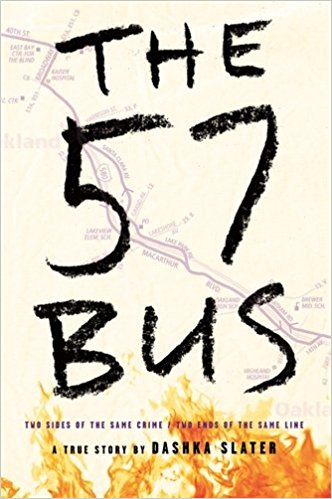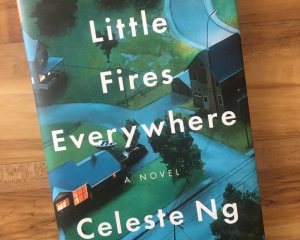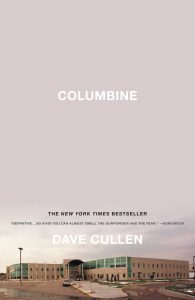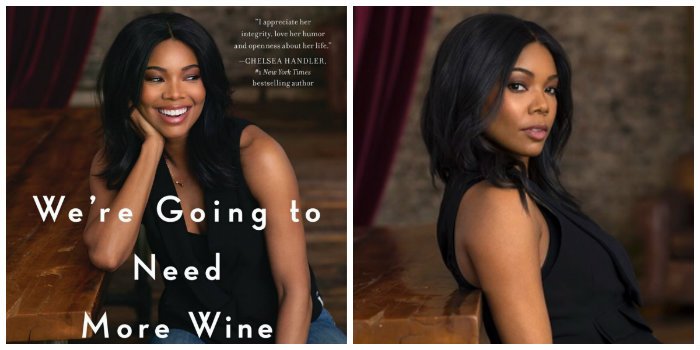I’ve been reading some great books lately! The downside is that several of them were kind of “heavy” books. I usually try and alternate a dark or serious book with some fluffy chick lit or something a little more light-hearted but I haven’t done that lately. So I apologize in advance that this post is a bit dark in parts.
1 )The Bus 57: The True Story of Two Teenagers and the Crime that Changed Their Lives by Dashka Slater
This book is a really important read and I hope a lot of people check it out.
Sasha (Luke) is an “agender” teen living in Oakland. Oakland is pretty accepting of LGBTQ people and Sasha doesn’t really run into too much adversity about becoming Sasha.
“All this time there had been just two rooms: male and female. Now it turned out there was another room–one that could be furnished however you wanted. The more time Sasha spent in this room, the more comfortable it felt. But the person who lived in this new room still had a boy’s name–Luke. By the second half of sophmore year, that name clearly no longer fit. [pg 37]”
They wear a mixture of male and female clothes and use “they and their” pronouns (which is a little confusing to read in the book).
“The outfits weren’t flamboyant, but they made Debbie nervous. She knew Sasha would be fine at school–if anything, the skirts gave them a little extra cachet at Maybeck, where unconventionality was an asset. It was the bus that worried her. Wearing skirts meant that Sasha was shedding that cloak of invisibility. [pg 44]”
Richard is an African American teen who is trying to avoid the common path of ending up in prison (or dead).
“I’m going to make you understand the family motto: Never let your obstacles become more important than your goal. [pg 68]”
“The goals: go to class, get your grades up, graduate, stay out of jail, survive. [pg 76]”
He’s a pretty good kid, trying his best, who has a good family that supports him. He’s struggling in school and seems influenced easily by friends.
“Of the roughly six hundred African American boys who started Oakland High schools as freshmen each year, only about three hundred ended up graduating. The odds of landing in the back of a police cruiser, on the other hand, were much better. African American boys made up less than 30 percent of Oakland’s underage population but accounted for nearly 75 percent of all juvenile arrests. [pg 79]”
It’s a true story–and somehow I don’t remember seeing it in the news. One day on the 57 Bus in Oakland, Richard is egged on by his friends to set Sasha’s skirt on fire. The boys get off the bus and Richard turns around to see the bus pulling away and Sasha freaking out because they are on fire. The bus driver hasn’t realized what is happening yet. Richard immediately realizes his grave mistake and feels terrible.
Sasha survives and goes through extensive burn care. The entire community stands up for Sasha. Richard is arrested and they call it a “hate crime” because Sasha is transgendered. The police ask Richard if he’s homophobic and he says yes–because he thinks homophobic means he’s not gay. He’s just a scared, confused, naive teenager.
The rest of the book is about the trial, the community healing and Sasha’s recovery. Because the author tells both Richard and Sasha’s stories before explaining the incident, you really do feel for both of the kids and while you want justice for Sasha, you don’t want Richard to spend his entire life in prison. There is more to the story than a click-bait title.
“It just seemed like the outside world didn’t grasp how easy it was for kids who grew up in poor neighborhoods to take that wrong turn. [pg 197]”
The book also talks about restorative justice and how much better it can be, especially for juveniles.
“Our system is focused on blame and punishment and not on healing and learning. [pg 238]”
I teared up many many times during this book. It was an emotional journey and you feel heart broken for both teens. By the end you really hope the justice system could change. Excellent book.

2 ) Little Fires Everywhere by Celeste Ng
I’ve been seeing this book everywhere and when I started it, I didn’t get it. For some reason I couldn’t focus or something…but I’m glad I held in there and kept reading because all of a sudden it got good.
Mia is a single mom and a photographer/artist with a teenage daughter, Pearl. They are kind of nomadic, moving frequently. Mia promises Pearl that this time they’ll stay for good. They rent a small apartment from a rich family, The Richardsons, and Pearl befriends the rich family’s teenage kids.
Mia makes a friend at a part time job, Bebe, who is an Chinese immigrant who gave up her baby. The Richardson’s friends adopt the abandoned baby. But months later, Bebe wants her baby back and the town is divided on who should get the baby. At the same time, the secrets behind Mia’s constant moving comes out and changes everyone’s lives.
The book was well written and the characters were well developed and felt real. I enjoyed the friendships in this book and about half way through, Mia’s secret is revealed and it’s quite shocking. Getting over the slow start, the book hooked me! There were some plot structure faults, but minor enough for me to keep reading and not be annoyed by it. Definitely recommend.

3 ) Columbine by Dave Cullen
The author was one of the first reporters on the scene and he spent almost a decade researching, interviewing and analyzing what happened on April 20, 1999. This book is a heavy read–in more ways than one. The subject matter is of course difficult and I cried several times reading. The book is also very long (or maybe it just felt that way). It took me almost two weeks to read it. There were definitely times when I couldn’t put the book down because it was so compelling.
“Much of the country was watching the standoff unfold. None of the earlier school shootings had been televised; few American tragedies had. The Columbine situation played out slowly, with the cameras rolling. [Loc 1111]”
“The violence intensified in the springtime…Shooting season, they began to call it. The perpetrator was always a white boy, always a teenager, in a placid town few had ever heard of. Most of the shooters acted alone. Each attack erupted unexpectedly and ended quickly, so TV never caught the turmoil. [Loc 291]”
There were school shootings before Columbine. But Columbine was different in a lot of ways. The most significant being that it was televised. I remember where I was on that day. I was at home, getting ready for work, soon to be moving to Portland from Seattle, when I saw it on the news. I couldn’t believe what I was watching and I was horrified and scared and relieved that I wasn’t in high school anymore.
I know the topic of school shootings is a hard one. It’s even harder for me now that I have a child. I think this is a really important book to read, though, because it opened my eyes to a lot of things. The first is that there are a LOT of false things about Columbine. I assumed what everyone else did–the outcast, loser, Goth kids getting revenge. Apparently that was no the case at all.
“The Trench Coat Mafia was mythologized because it was colorful, memorable, and it fit the existing myth of the school shooter as outcast loner…We remember Columbine as a pair of outcast Goths from the TCM snapping and tearing through their high school hunting down jocks to settle a long-running feud. Almost none of that happened. No Goths, no outcasts, nobody snapping, no targets, no feud…[Loc 2338]”
Eric and Dylan had been popular, actually. They had friends. They had part time jobs. They did well in school. Then…something went wrong and they started going down a path that lead to violence.
“Eric and Dylan had been considering a killing spree for at least a year and a half. They had settled on the approximate time and location a year out: April in the commons. [Loc 596]”
Eric had wanted to top the Oklahoma City Bombing and had wanted to echo the anniversary like Timothy McVeigh did with Waco.
“The Columbine crisis was never a hostage standoff. Eric and Dylan had no intentions of making demands. SWAT teams searched the building for over three hours, but the killers were lying dead the entire time. They had committed suicide in the library at 12:08, 49 minutes after beginning the attack. The killing and the terror had been real. The standoff had not. [Loc 1367]”
The fact that the killing did not last very long, but it took three hours for the SWAT team to discover that was really heartbreaking. There were several victims that could have been rescued had they been discovered in time. I can’t imagine their family’s heartbreak at that news.
The second big eye opening thing about this story was that to me, Eric seemed like the instigator. Dylan was passive and along for the ride. He was a depressive follower and Eric was in control. There were many times that Dylan spilled some details of their plans to people, friends, etc. There were many times this could have been thwarted. I kind of feel like Dylan wanted to get caught. Why else would he be telling people?
“Dylan Klebold was not a man of action. He was conscripted by a boy who was. [Loc 2944]”
Everyone wanted to know WHY? Me too, which is why I read the book.
“The Columbine massacre could have been the work of a psychopath, but Dylan showed none of the signs…None of the usual theories fit. Everything about Dylan screamed depressive…Dylan’s journal read like that of a boy on the road to suicide, not homicide. [Loc 2927]”
Does the book answer the “why” question? Sort of. The fundamental nature of a psychopath is the lack of fear, failure to feel anything and not having any shame. Eric Harris was most definitely a psychopath. You don’t necessarily get that vibe from Dylan, though.
“…somebody needed to take control and Eric was your man. He was like a robot under pressure. Nothing could faze him, not when he cared about the outcome. [Loc 209]”
What I loved about this book was that while it talked about the timeline of what happened and covered the details of the aftermath (the lawsuits, etc), it also focused on the survivors. Not just students were killed or injured, but teachers, too. And the author goes into detail about how everyone dealt with the aftermath, the PTSD, the press, the anniversaries, the healing…many parents of the victims ended up getting divorced. But it wasn’t all negative. A lot of the survivors were very positive and made something amazing out of their lives.
A survivor, Val, said “After ten years, I can look at myself in the mirror and not see the scars.”
The book also talks about Eric and Dylan’s parents. There was no abuse. They weren’t bad parents. In fact, they seemed like really good parents. That just missed…something. The parents were blamed, the parents were ostracized by the community…but they were victims, too.
I think this book is important to read because it details what happened to change the landscape of the teenager shooter/school shooting.
“For decades, terrorists and mass shooters trod their separate paths. Then Columbine. Eric and Dylan fused them. School murders had been done; Eric envisioned a school catastrophe. A template was born. The spectacle murder. Performance without a cause. [Loc 5932]”
What I think about most after reading this book is that yes we need stricter gun laws and we need better mental health counseling for teens–but I think the media needs to stop making school shootings such a spectacle. The bottom line in all these types of events seems to be the killer wanting their 15 minutes of fame.
It’s a chilling, emotional book, but you aren’t left at the end feeling horrified. The phoenix-like transformations of the survivors and the community are pretty uplifting.

4 ) We’re Going to Need More Wine: Stories that Are Funny, Complicated and True by Gabrielle Union
I really liked this book! I heard an interview with her on a podcast and while I knew her name and face, I didn’t know much about her. (I remembered her from a few episodes of Friends & 10 Things I Hate About You, back in the day.) Her book sounded interesting so I put it on hold at the library (it was a long wait, too!).
Gabrielle wrote a memoir about her life, growing up outside of Oakland in a white suburb (one of the only black families in the area), her family and their struggles, her sexual assault at age 19, her failed first marriage, her second great marriage…all with hilarious humor, honesty, depth and reflection.
She talked a lot about race. I enjoyed reading her perspective about growing up African American and feeling like she had to fit in in the white community she lived in, how she was always “the friend” and never the “girlfriend” because she was black.
“My parents gave me the pep talk when I started school, the same speech all black parents give their kids: you’re going to have to be bigger, badder and better, just to be considered equal.[pg 7]”
” ‘Oh my god, your hair looks so straight.’ ‘Your hair looks so nice that way!’ Translation: You look prettier the closer you get to white. Keep trying. [pg 48]”
The description of her sexual assault was difficult to read but she wrote it with sensitivity and addressed the PTSD and anxiety she faced, pretty much all the time, and that was really thoughtful and important. It made her very relatable and vulnerable and it took a lot of guts to write about that stuff.
“Now I can appreciate the care with which I was handled (by the cops at the scene). Now, I know it rarely happens that way. And it really rarely happens that way for black women. I am grateful I had the experience I did, wrapped up in the worst experience of my life. [pg 97]”
“The other question I get asked is ‘What were you wearing?’ I got raped at work and people still want to know what role I played in what happened to me. [pg 100]”
That quote filled me with rage. This happens to so many women. They are blamed. They are questioned like they “asked for it.”
“I felt grateful that my rapist was a stranger. It felt like a luxury not knowing the person. Because there was no gray area. [pg 102]”
“After I was raped, in 1992, I didn’t leave my house for a whole year unless I had to go to court or to therapy. I simply did not leave. That spiraled into me not going anywhere that I could be robbed. Anyplace where there was money exchanged, I simply avoided. [pg 104]”
I really appreciated how honest she was about that time in her life. And I’m glad she came out of it and overcame the trauma and even became an activist.
She talked a lot about Hollywood, her successes and failures, being a “mean girl” and a gossip and how that wasn’t enriching her life in any way (“When you’re in a place where you don’t know what makes you happy, it’s really easy to be an asshole [pg 177]”). She also wrote about how much female celebrities are touched and groped by strangers and how as a sexual assault survivor, that’s really difficult for her.
She wrote a lot about race throughout the book. Her second marriage was to Dwyane Wade (Miami Heat basketball player) and she described what it was like being a stepmom to three boys. What I found chilling and sad, and very relevant, was what she called the “Black Bombs”. Basically realities of being African American in this climate. Like when they take the dogs for walks, to put the leash around their thumb so they can spread their fingers and hands if stopped by the cops. (UGH!!!)
The boys went out for the evening (in the dark) and she freaked out on her husband for allowing it because they were in Florida.
” ‘This is an open-carry state, D, a stand-your-ground state, and all our neighborhors have to do to shoot these children is say they feel threatened. What’s more threatening to our neighbors than two black boys ‘lurking’? Do you trust these people to not kill our kids? [pg 211]”
Then she asked her husband what he instructed his kids to say if ever stopped by police. He said their full names and address. Her answer really showed the scary reality of African American kids.
” ‘Wrong answer,’ I say. ‘I’m Dwyane Wade’s kid. That’s what they say.’ [pg 212]”
A lot of the stuff was hard to read but it was important to read and she balanced it out nicely with humor and a very REAL voice throughout the book. I read it in a day and a half and loved it! She’s a really good writer.

Happy Reading!
These posts have Amazon affiliate links.
emmaclaire
You are brave to read some of this stuff, Lisa! I feel like a wimp, but I just don’t think I’d be able to make it through the Columbine book – too soon! Know what I mean? Like the Jodi Picoult book about a school shooting, I forget the name, but I love her work and just couldn’t bring myself to read that one. That being said, I did realize that the last 3 books I read were all pretty much dealing with aging and death, and the book I’m reading now has to do with death in a way as well – what is up with me?? Anyway, I can totally recommend The Leisure Seeker by Michael Zadoorian – it’s our book club book we’re currently reading. I wanted to read it before the movie came out, and I did enjoy it a lot. Current book is Goodbye For Now, by Laurie Frankel. She’s a member of the Seattle Seven writer’s group, and I have to say I have loved all the books I’ve read from their authors and also love the philanthropic work they do with literacy here in Seattle. A couple to add to your list and I’m going to add the Ng book to mine – thanks!
Lisa Eirene
The Leisure Seeker sounds great! I just put it on hold.
Yeah, I don’t know how I got such heavy books one right after another. A lot of times that’s when the library books comes available for me. So it’s kind of a gamble what I read next!
Biz
Every time I read one of your book recap posts, I think “I should read more!” Then I go to the library, get books, let them sit on my bedside table for three weeks and then return them – usually late 😛
Lisa Eirene
So I have a suggestion…do you have a Kindle? I have one and I was resistant to it. I wanted REAL books. I hated the idea of technology taking over in that realm. But I got one for Christmas a few years ago and it’s GREAT. I read SO MUCH MORE now on the Kindle than I did before. Part of that is that I don’t have to wait long to get a book, I can get library books downloaded onto my Kindle so it saves time going to the library to pick up a book. Plus, don’t you take the train to work? You could read there!
Carrie @ Season It Already!
I got Little Fires Everywhere on audio and then realized with how long it was and that I’m only commuting 3 days a week, I wouldn’t be able to get it back to the library in time. There are no renewals because it’s so high on the wait list!
So I brought it back and am now 157 on the book wait list. HA!